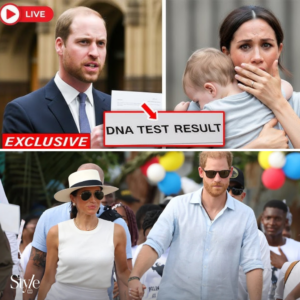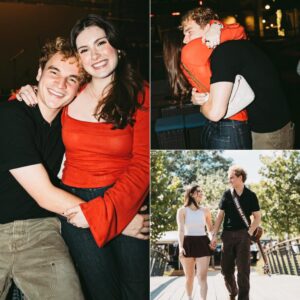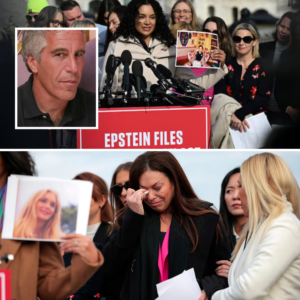Meghan Markle, the Duchess of Sussex, has never been one to shy away from reinvention. From her days as a television actress on Suits to her role as a global humanitarian and royal figure, she has consistently pushed boundaries, embracing new challenges with a blend of charisma and determination. Her latest venture, however, may be her most ambitious yet: a foray into the cutthroat world of fashion design, with aspirations to build a billion-dollar brand that rivals the likes of Victoria Beckham. But as Meghan sets her sights on this glittering prize, she faces a tidal wave of skepticism, backlash, and industry challenges that threaten to derail her dreams before they even take flight.
A New Chapter in Meghan’s Entrepreneurial Journey
Meghan’s journey into entrepreneurship is not new. Since stepping back from senior royal duties in 2020, she and Prince Harry have built a multifaceted media and business empire in the United States. Their production company, Archewell Productions, has secured high-profile deals with platforms like Netflix, resulting in projects such as the docuseries Harry & Meghan and the lifestyle show With Love, Meghan. Her podcast, Confessions of a Female Founder, has explored themes of entrepreneurship and empowerment, while her lifestyle brand, As Ever, launched in March 2025, offers home goods, food products, and curated affiliate links via a ShopMy page. The brand’s initial release, featuring artisanal jams and home decor, sold out rapidly, signaling strong consumer interest but also highlighting Meghan’s knack for generating buzz.

Now, Meghan is reportedly pivoting to fashion, a move that aligns with her long-standing interest in style. Known for her elegant yet approachable aesthetic—think tailored coats, minimalist dresses, and sustainable brands—she has been a fashion influencer since her royal days. Her wedding dress, designed by Givenchy’s Clare Waight Keller, and her carefully curated tour wardrobes sparked global trends. But transitioning from a style icon to a fashion designer is a leap that requires more than a keen eye for aesthetics. It demands business acumen, industry connections, and a willingness to navigate a fiercely competitive landscape.
The Victoria Beckham Blueprint
Meghan’s reported inspiration, Victoria Beckham, is a towering figure in the fashion world. The former Spice Girl transformed herself from pop star to respected designer, launching her eponymous label in 2008. Known for sleek silhouettes and impeccable tailoring, Victoria Beckham’s brand has grown into a global powerhouse, with a reported valuation exceeding £100 million. Her journey wasn’t without hurdles—early skepticism about her credentials and financial losses tested her resolve—but her persistence and strategic partnerships, including with luxury retailers, cemented her status as a fashion titan.

Meghan’s ambition to emulate this trajectory is bold but fraught with challenges. Like Victoria, she is a high-profile figure transitioning from entertainment to design, leveraging her personal brand to carve a niche. But unlike Victoria, who entered fashion during a less saturated digital era, Meghan faces a market dominated by fast fashion giants, sustainable startups, and established luxury houses. Moreover, Victoria’s success was bolstered by her ability to win over industry gatekeepers, from editors to buyers, something Meghan has yet to achieve on a comparable scale.
The Backlash: A Polarizing Figure in a Ruthless Industry
Meghan’s fashion ambitions have sparked intense debate, with critics quick to question her viability in the industry. Social media platforms, particularly X, have been abuzz with opinions, ranging from excitement among her supporters to sharp criticism from detractors. Some argue that her polarizing public image—shaped by years of media scrutiny, royal family tensions, and cultural divides—could hinder her ability to win over the fashion elite. The industry is known for its exclusivity, with gatekeepers like editors, buyers, and influencers wielding significant power. For Meghan, whose every move is dissected, breaking into this inner circle may prove daunting.

The backlash extends beyond personal criticism to practical concerns. Building a fashion brand requires substantial investment, from sourcing materials to securing manufacturing partners. Meghan’s As Ever brand, while successful in its initial food and home goods offerings, has faced logistical challenges, including reported hesitations in scaling up. Fashion, with its rapid trend cycles and high overhead costs, is an even riskier proposition. Critics point out that her lack of formal design experience could undermine her credibility, drawing comparisons to other celebrity-driven brands that fizzled out after initial hype.
Public sentiment, as reflected in online discussions, is mixed. Supporters praise Meghan’s resilience and entrepreneurial spirit, arguing that her global platform and relatability could disrupt an industry ripe for innovation. They see her as a potential advocate for sustainable fashion, given her past endorsements of eco-conscious brands. Detractors, however, view her ambitions as overreaching, accusing her of chasing trends rather than building a cohesive brand identity. The comparison to Victoria Beckham, while aspirational, has also fueled skepticism, with some questioning whether Meghan can match the former’s design expertise and business savvy.
Navigating the Fashion Landscape
To succeed, Meghan must navigate a complex ecosystem. The fashion industry is undergoing a transformation, driven by digital platforms, sustainability demands, and shifting consumer preferences. Social media has democratized access, allowing new designers to bypass traditional gatekeepers through direct-to-consumer models. Meghan’s mastery of digital marketing—evident in her Instagram relaunch and As Ever’s social media campaigns—gives her an edge. Her ability to connect with audiences, honed through years in the public eye, could translate into a loyal customer base.
Sustainability is another critical factor. Consumers increasingly prioritize ethical production, transparency, and environmental impact. Meghan’s advocacy for social causes, including women’s empowerment and racial equity, positions her to align her brand with these values. A fashion line emphasizing sustainable materials, fair labor practices, and inclusive sizing could resonate with younger, socially conscious consumers. However, scaling such a vision requires robust supply chains and partnerships, areas where As Ever has reportedly faced hurdles.
Competition is fierce. Established brands like Chanel and Dior dominate luxury, while affordable giants like Zara and H&M churn out trends at breakneck speed. Emerging designers, amplified by platforms like Instagram and TikTok, are also vying for attention. Meghan’s challenge is to carve out a distinct identity—neither too niche nor too mainstream—that captures her personal style while appealing to a broad market. Collaborations with established designers or retailers, as Victoria Beckham did early on, could provide credibility and exposure.
The Billion-Dollar Dream
Meghan’s reported goal of becoming a “billionaire” fashion designer underscores her ambition but also raises eyebrows. Few fashion brands reach such valuations—think Ralph Lauren or Gucci—requiring decades of growth, global expansion, and diversified revenue streams. Victoria Beckham’s brand, while successful, is nowhere near this level, highlighting the audacity of Meghan’s vision. Her partnership with Netflix, which supports As Ever’s lifestyle ventures, could provide financial backing, but fashion’s high failure rate looms large.
Her entrepreneurial track record offers both promise and caution. As Ever’s rapid sell-outs demonstrate her ability to generate demand, but sustaining that momentum is another matter. Her podcast hiatus, announced in June 2025 to focus on As Ever, suggests a strategic shift toward her brand, but it also highlights the difficulty of juggling multiple ventures. Meghan’s resilience—forged through years of public criticism and personal challenges—will be tested as she balances creative control, business operations, and public perception.

The Personal Stakes
For Meghan, this venture is more than a business move; it’s a statement of independence. Her desire to “make it on her own,” as reported, reflects a determination to define her legacy beyond her royal title or Hollywood past. Fashion, with its blend of creativity and commerce, offers a platform to showcase her vision. Yet, the parallels with Victoria Beckham extend beyond business. Both women have faced scrutiny as outsiders in elite circles, using their platforms to redefine success on their terms. Meghan’s ability to weather the storm of backlash, as she did during her royal tenure, will be crucial.
Her personal style could be a guiding force. Meghan’s wardrobe, often a mix of high-end and accessible pieces, resonates with women seeking versatile, modern looks. A fashion line that captures this ethos—perhaps blending California casual with royal elegance—could fill a market gap. But execution is everything. From design sketches to runway shows, every step must be flawless to silence doubters.
The Road Ahead
As Meghan embarks on this journey, the world watches with bated breath. Her fashion venture, if successful, could redefine her as a creative and commercial force, joining the ranks of celebrity-turned-designers like Victoria Beckham. But the path is treacherous, littered with financial risks, industry politics, and public scrutiny. Her ability to learn from setbacks, as she did with As Ever’s early stumbles, will be key. So too will her knack for storytelling, which has always been her greatest asset.
The fashion industry is unforgiving, but it rewards those who dare to innovate. Meghan’s billion-dollar dream may seem lofty, but her track record suggests she’s not one to back down. Whether she emerges as the next Victoria Beckham or carves a wholly new path, one thing is certain: her next move will keep everyone talking.




